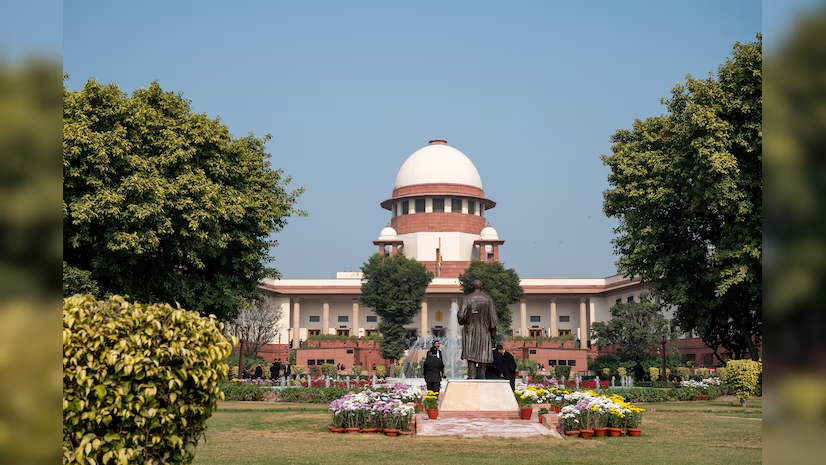- Courses
- GS Full Course 1 Year
- GS Full Course 2 Year
- GS Full Course 3 Year
- GS Full Course Till Selection
- Online Program
- GS Recorded Course
- NCERT (Recorded 500+ Hours)
- Polity Recorded Course
- Geography Recorded Course
- Economy Recorded Course
- AMAC Recorded Course
- Modern India, Post Independence & World History
- Environment Recoded Course
- Governance Recoded Course
- Science & Tech. Recoded Course
- International Relations and Internal Security Recorded Course
- Disaster Management Module Course
- Ethics Recoded Course
- Essay Recoded Course
- Current Affairs Recoded Course
- CSAT
- 5 LAYERED ARJUNA Mentorship
- Public Administration Optional
- ABOUT US
- OUR TOPPERS
- TEST SERIES
- FREE STUDY MATERIAL
- VIDEOS
- CONTACT US
Supreme Court upholds States’ power to regulate industrial alcohol
Supreme Court upholds States’ power to regulate industrial alcohol
- On 23rd October 2024, a 9-judge Bench of the Supreme Court of India delivered an 8:1 ruling saying that states have the power to tax both alcoholic beverages and industrial alcohol.
- This ruling is expected to enhance state revenues, as excise duties on alcoholic drinks are important for state finances.
What is Industrial Alcohol?
- Industrial alcohol is impure alcohol used as an industrial solvent, created by mixing chemicals (like benzene and gasoline) with ethanol.
- This denaturation makes it unfit for human consumption and reduces its price.
- Uses: It is utilized in manufacturing pharmaceuticals, perfumes, cosmetics, and cleaning products.
- Risks: Denatured alcohol can be misused to create illicit liquor, leading to severe health hazards, including blindness and death.
Key Issue:
- The main question was whether the term “intoxicating liquor” includes industrial alcohol.
- The majority of judges supported the states’ authority, while one judge dissented.
Judges Involved:
- In Favor of States: Chief Justice D Y Chandrachud and other judges.
- Chief Justice Chandrachud highlighted that the terms in the 7th Schedule should be interpreted broadly, asserting that "intoxicating liquor" could include any substance that produces intoxication, not limited to traditional alcoholic beverages.
- He emphasized that the scope of the term should include any intoxicating effect.
- Dissenting Opinion: Justice B V Nagarathna, who argued that industrial alcohol regulation should fall under the Centre's jurisdiction.
- Justice Nagarathna argued that the nature of the product must be the deciding factor.
- She argued that the potential abuse of industrial alcohol should not be included in the definition of intoxicating liquor, and said such a broad interpretation could lead to regulatory overreach.
Legal Context:
The ruling is based on 2 entries in the Seventh Schedule of the Indian Constitution, which divides lawmaking powers:
- Entry 8 (List II - State List): Grants states the authority to regulate intoxicating liquors.
- Entry 52 (List I - Union List): Empowers the Centre to regulate industries as declared necessary by Parliament.
The Industries (Development and Regulation) Act, 1961 includes alcohol-related industries, leading the Centre to claim it had full control over industrial alcohol, limiting state powers.
Impact of the Ruling:
- The ability to tax industrial alcohol will significantly enhance state revenues.
- For instance, Karnataka increased its Additional Excise Duty (AED) on Indian Made Liquor (IML) by 20% in 2023.
- Clarity in Centre-State Relations: This ruling clarifies what powers states have, even with strong central authority.
Setting Aside Previous Judgment:
The Supreme Court’s decision overturns its 1990 judgment in Synthetics & Chemicals Ltd. v. State of Uttar Pradesh, which had limited the definition of "intoxicating liquor" to potable alcohol, preventing states from taxing industrial alcohol.
Balancing Federal Powers:
The court recognized 2 possible interpretations when entries overlap:
- Granting states the power to regulate intoxicating liquor.
- Allowing Parliament complete control over the intoxicating liquor industry through legislation.
The majority opinion chose the interpretation that preserved federal balance, concluding that intoxicating liquor—including denatured alcohol—falls under the exclusive jurisdiction of states, while the Centre cannot regulate these matters under Entry 52.
What is the 7th Schedule?
The 42nd Amendment Act of 1976 moved five subjects from the State List to the Concurrent List in the Constitution of India:
|
How Liquor Sale Contributes to Revenue of State Governments
- Excessive consumption of liquor is recognized as harmful to health, yet many people continue to indulge in alcohol.
- This behavior significantly contributes to state governments’ revenues, with a substantial portion derived from the sale of alcohol.
- Each state in India has its own rules and regulations regarding liquor sales; some states (Bihar, Gujarat, Mizoram, Nagaland, and Lakshadweep) have implemented bans.
- While others actively pursue measures to increase revenue from alcohol sales due to the substantial excise duty collected.
Sources of State Revenue
State governments generate income from various sources, including:
- State GST
- Land Revenue
- Taxes on Petrol and Diesel
- Other Taxes
Among these, excise duty on alcohol is a major contributor to state revenue.
Revenue Statistics
- It has been reported that, on average, 15% to 30% of a state's revenue comes from liquor sales.
- Uttar Pradesh (UP) leads in this area, generating a record revenue of ₹41,250 crore from excise duty in the financial year 2022–23.
- In the financial year 2020–21, India earned approximately ₹1.75 lakh crore from excise duty on alcohol, with UP again topping the list in revenue generation.
- States such as Karnataka, Maharashtra, Delhi, Punjab, and Madhya Pradesh also report significant earnings from liquor sales.
Tax Rates and Variability
- As of September 2023, Karnataka had the highest liquor tax rate in India, at over 80% of the maximum retail price (MRP).
- Goa's tax rate was around 50%. For example, a bottle of spirit that costs ₹100 in Goa can cost approximately ₹513 in Karnataka due to the higher tax rate.
liquor tax rates in some other states (2023):
- Maharashtra: 71%
- Rajasthan: 69%
- Telangana: 68%
- Uttar Pradesh: 66%
- Delhi: 62%
Alcohol is not subject to the Goods and Services Tax (GST), which is why there are different tax rates across India.
This has led to a large difference in taxes, which has contributed to alcohol smuggling across state borders.
Taxation by Product Type
Different types of alcohol are taxed differently:
- Beer
- Whisky
- Rum
- Scotch
- Country liquor
Excise duty also varies depending on whether the alcohol is manufactured domestically or imported, leading to further disparities in pricing and taxation.
Impact of Lockdowns
During the COVID-19 lockdowns, when liquor shops were closed across the country, states faced significant financial losses. Reports indicated that states were losing about ₹700 crore every day due to the halt in liquor sales.




